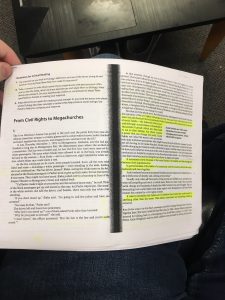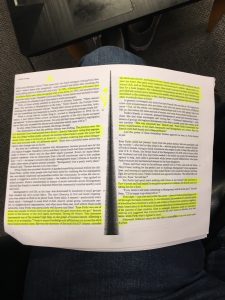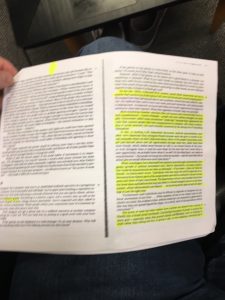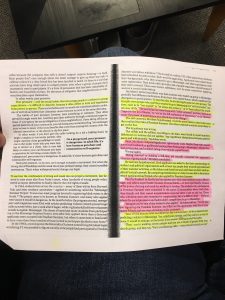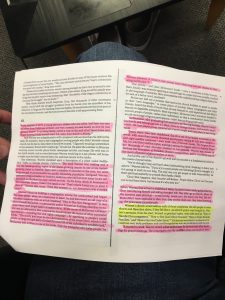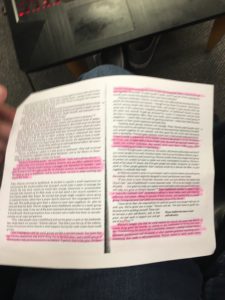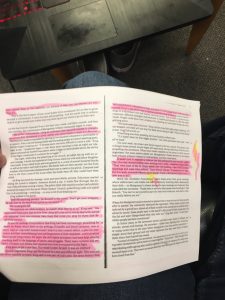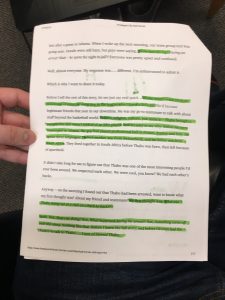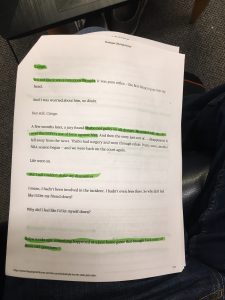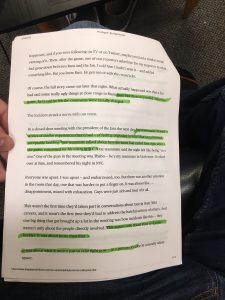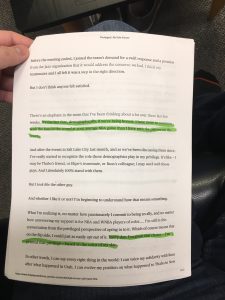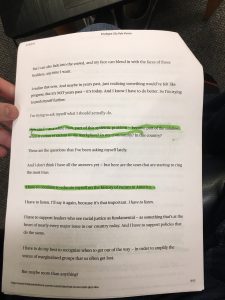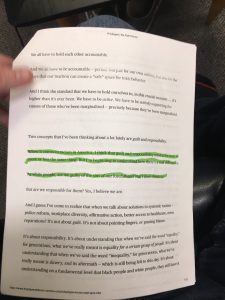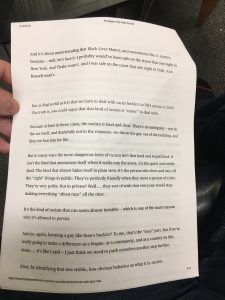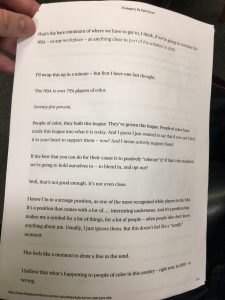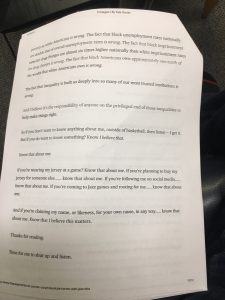I am not aware of what kind of groups that deal with race and the institutions it effects are already available on campus. So, besides the fact that I have read these papers and the stories I’ve heard from people I know. I’m not the best person to ask about this. This is not even factoring in how generally oblivious within the predominantly white social spheres of UNE, to begin with. Just as of writing this I’m currently not within ubiquitous disposal of someone who better understands these topics specifically relating to UNE. Most of the stories I’ve heard have happened outside if UNE.
You could say that I live in some sort of white bubble. At home in Connecticut I who is Not in the total whiteout that most of the community’s experience, but it was white. My high school was unique in that it wasn’t totaled white but had a significant minority population when compared to other schools. In fact, the race did come up at an issue in interschool conflicts. At the time I could remember feeling a lot like Kyle Korver. I was aware that these issues were present within my community and actively joked about them with my friends. Whenever it became very poignant as to cause interschool incidents you think it would stir a lot more up in the general school population. Just like life in New York was not his white as my life in Connecticut. Astoria is known for being a variable melting pot of a variety of different cultures at roughly the same economic level. As a younger kid, the concept of race was utterly foreign And all that mattered was who was the funniest to play with. So I have some experience with it but I am definitely guilty of pushing it aside whenever it gets brought up. Even then when leaving high school one of the things I secretly was excited for was that when I got to college nobody cared there’s almost like if childhood started again and nothing mattered except whether or not you were fun to hang out. So, when it comes to ignoring racial issues on campus. I’m not going to say like I’m purposely ignoring them but I’m ignoring them. So maybe that’s something I could change it’s so easy to ignore issues like this around campus. it can be hard to have really convinced people to invest their time at college into these issues as the opportune. it’s an easier sell to people of color have gone through these experiences understand it’s important but to people who have lived most of their lives that within the white bubble can be a bit of a difficult sell and you’re going to have to rely on the lot the methods you used to build a social movement to really get people engaged in these issues.
I do believe that it’s something you could do, but again the barriers to this just get it college student with classes and test to give a shit at a time when it can seem like they’re future is one bad grade away from not happening. So, it may be better to mix awareness project with either distressing events, like food and chat or movie about these topics, or an Academic session that lets you Improve academic skills wall learning about these topics while not missing out on study time. These strategies are similar to employed by Rick Warren and his formation of the Saddleback Church in how he changes the context in which faith was discussed. This helps in getting people entrusted in the discussion beyond just what people are talking about. The canal which to conduct this thought is the preexistence club like the Black Student Union Club. These activities should be fairly compact time wise and on days that are easy for people to attend. The activity should be an engaging wall at the same time not being too complicated as to confuse or mistake those attending to the issues being portrayed. Your hair difficulties I can see in running this club are finding sufficient materials that are easily digested and easily shared. One of the things this club will have to overcome is getting enough people to be interested in it and consistently show up. I have personal experience with running a club in high school and getting people to consistently show is one of the greatest challenges to running any club. One thing I found is that you must run on a weekly schedule. Running on a weekly schedule will help keep you and your club in your member’s heads. At this club meetings, you must remember that you are the guide and Steer the conversation away from normal social interactions to discuss the topics are there to discuss.

